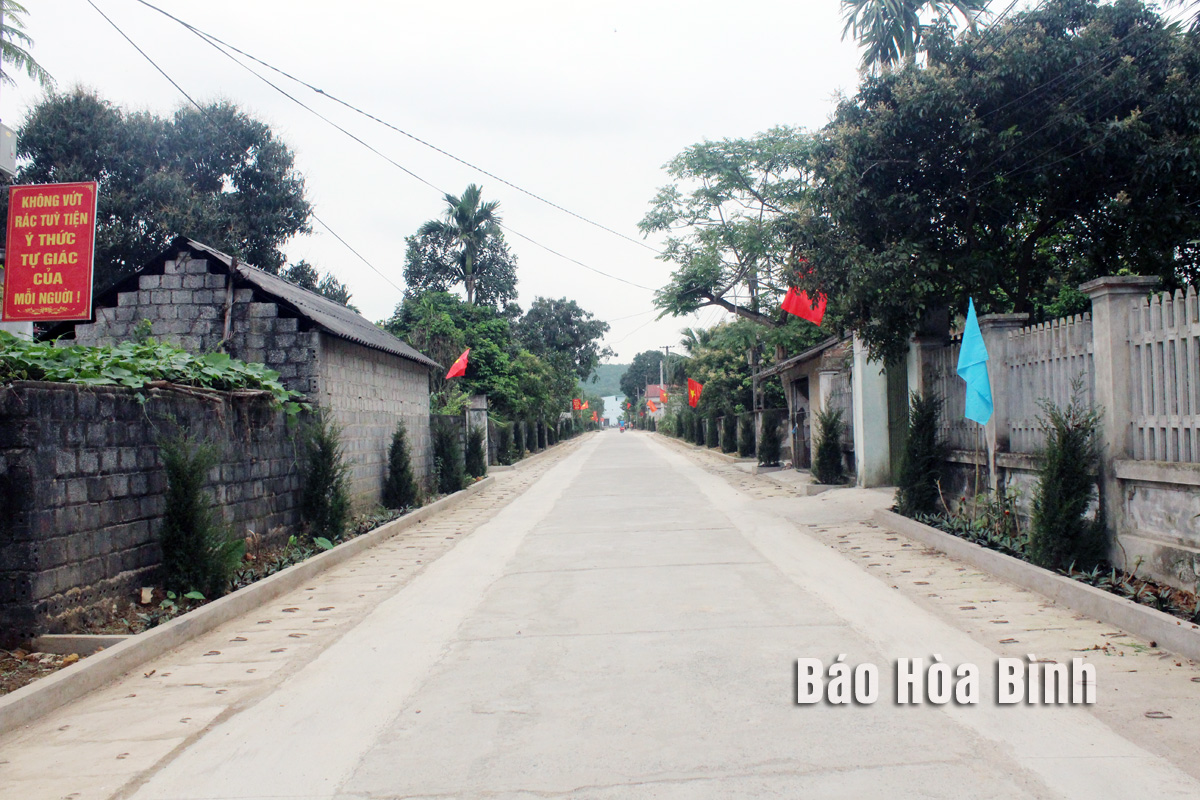
The Hoa Binh People's Committee on January 8 issued Plan No. 02/KH-UBND outlining the local implementation of the national target programme for new-style rural development for 2024.

Thanks to resources mobilised, roads of Tan Tien hamlet in Dong
Tam commune, Lac Thuy district, have been concretised and expanded.
The plan sets forth ambitious objectives, aiming to achieve
the recognition of six, two, and one additional communes meeting the normal,
advanced, and model standards for new-style rural building, respectively. The
average new-style rural criteria are set at 16.3 criteria per commune.
Additionally, the plan calls for the standardisation of over
16 One Commune, One Product (OCOP) items, each achieving a rating of three
stars or above. Emphasis will also be placed on completing essential
infrastructure projects, meeting the production and living requirements of
rural residents for transport, irrigation, electricity, domestic water supply,
schools, and health care. Other targets are to improve the quality of life for
rural inhabitants and establish multiple production models linked to stable
employment for the locals.
The total capital to be mobilised for the programme
implementation this year exceeds 2.9 trillion VND (118.51 million USD). The sum
includes 161.706 trillion VND sourced from the central budget, 214.445 trillion
VND from provincial and district budgets, and 2 trillion VND worth of credit
capital.
The provincial People's Committee has outlined 11 key tasks
and solutions to ensure the effective and quality execution of the programme.
Regarding Task Number 11, which focuses on diversifying and efficiently
utilising resources, the body has directed localities to proactively allocate a
portion of their resources from local budgets to support new-style rural
development efforts, with appropriate mechanisms devised to mobilise diverse
funding sources beyond the state budget.
The Standing Board of the Hoa Binh provincial Party Committee has agreed in principle on a proposal by the Standing Board of the Party Committee of Hoa Binh city to gather feedback on the city’s 1:2000 zoning plan, which forms part of its broader urban development strategy.
Hoa Binh province has made notable progress in public administration reform and digital government development, with the satisfaction index among citizens and businesses reaching over 84%, according to recent government evaluations.
Thanks to great efforts by local authorities in recent times, the governance and public administration performance of Mai Chau district has been significantly improved.
In the afternoon of June 6, the Party Committee, the People's Council, the People's Committee and the Fatherland Front of Lac Son district solemnly held a meeting to celebrate the 139th anniversary of the district's founding (1886–2025) and the 79th anniversary of the establishment of the district's Party Committee (1946–2025). There was the attendance of Mr. Bui Van Thang, the Vice Chairman of the Provincial People's Council; Mr. Quach Tat Liem, the Vice Chairman of the Provincial People's Committee; Ms. Dang Bich Ngoc, the Deputy Head of the National Assembly Delegation of the province; as well as the former leaders of the province and district through various periods, who are the natives of the district.
Implementing the Politburo’s Resolution No. 57-NQ/TW on breakthroughs in science – technology, innovation, and digital transformation is a golden opportunity for the northern mountainous province of Hoa Binh to renew growth model, improve competitive edge and shorten digital gap.
Resolution 57-NQ/TW, issued by the Politburo on December 22, 2024, identifies sci-tech, innovation, and digital transformation as strategic breakthroughs to build a developed and prosperous nation. In Hoa Binh province, this spirit is not just a slogan, it’s being put into action through concrete initiatives that form a "new development triangle”: digital citizenship, digital economy, and digital administration.



